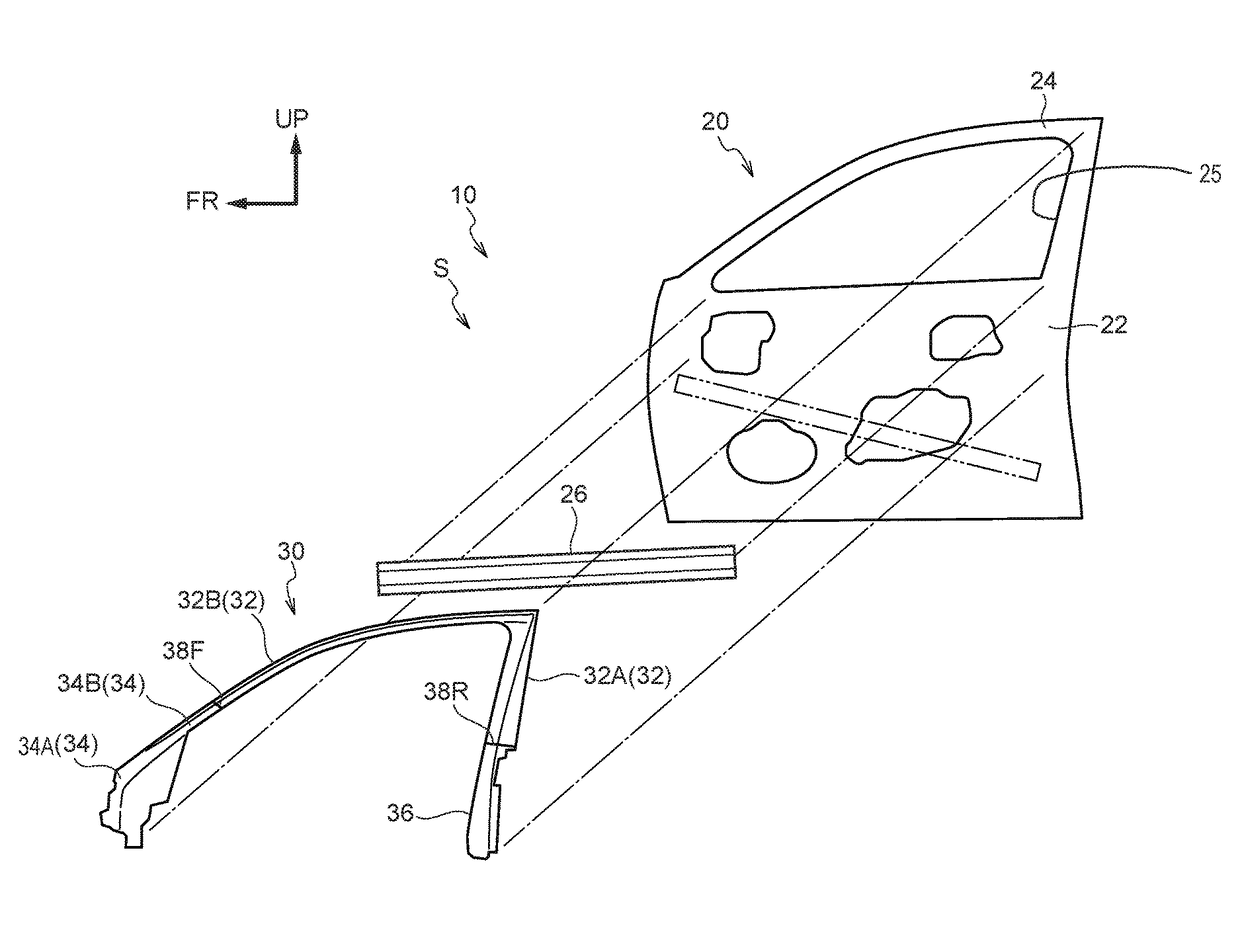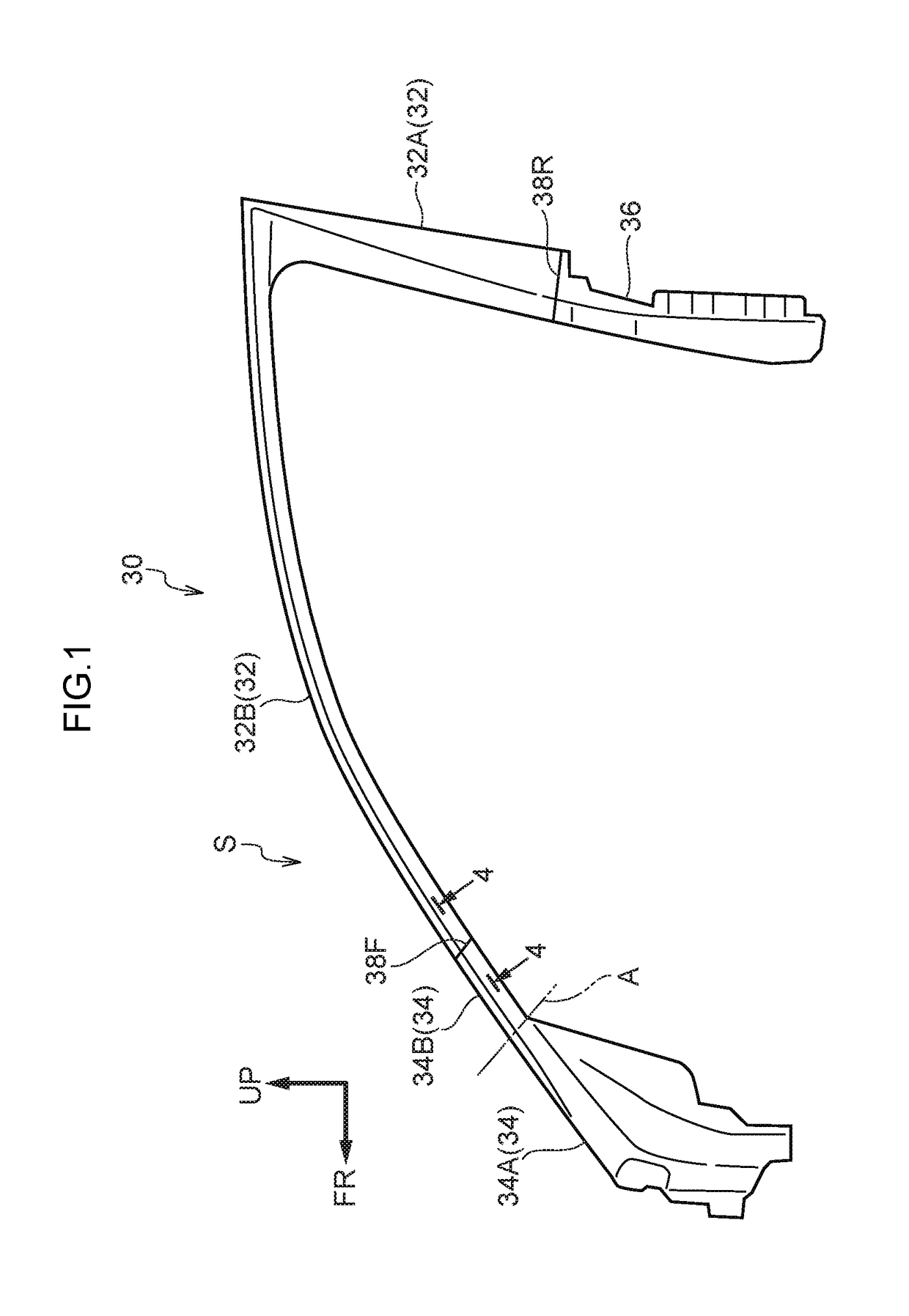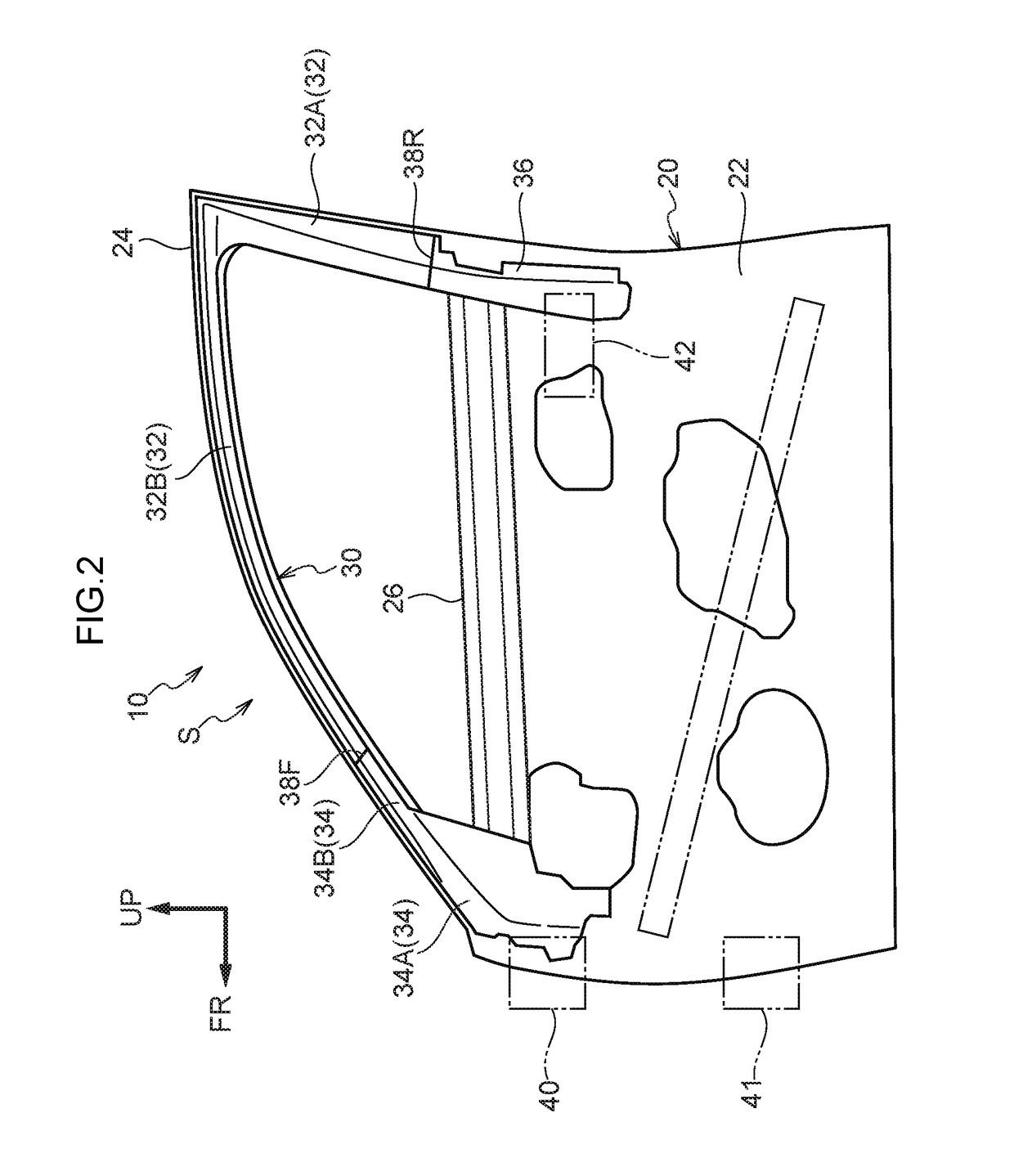Vehicle door frame structure
a technology for vehicle doors and frames, applied in the field of vehicle door frame structures, can solve the problems of increasing the weight of the entire frame member (frame reinforcement), and the weight of the entire vehicle door, and achieve the effect of increasing the weight of the vehicle door
- Summary
- Abstract
- Description
- Claims
- Application Information
AI Technical Summary
Benefits of technology
Problems solved by technology
Method used
Image
Examples
Embodiment Construction
[0024]A side door 10 serving as a “vehicle door” to which a vehicle door frame structure S pertaining to an embodiment of the present specification has been applied will be described below using the drawings. In FIG. 2, relevant portions of the side door 10, which is disposed on a right side portion of a vehicle (automobile), are shown in a simple side view seen from the door outer side. In FIG. 3, a state in which the relevant portions of the side door 10 have been exploded is shown in a simple side seen from the door outer side. It should be noted that arrow FR appropriately shown in the drawings indicates the door front side of the side door 10 and arrow UP indicates the door upper side.
[0025]As shown in FIG. 2, the side door 10 is mounted at the front end portion thereof to a vehicle body by a later-described hinge 40 in such a way that the side door 10 can be opened and closed about an axial direction coinciding with the door up and down direction. Additionally, in a state in w...
PUM
 Login to View More
Login to View More Abstract
Description
Claims
Application Information
 Login to View More
Login to View More - R&D
- Intellectual Property
- Life Sciences
- Materials
- Tech Scout
- Unparalleled Data Quality
- Higher Quality Content
- 60% Fewer Hallucinations
Browse by: Latest US Patents, China's latest patents, Technical Efficacy Thesaurus, Application Domain, Technology Topic, Popular Technical Reports.
© 2025 PatSnap. All rights reserved.Legal|Privacy policy|Modern Slavery Act Transparency Statement|Sitemap|About US| Contact US: help@patsnap.com



